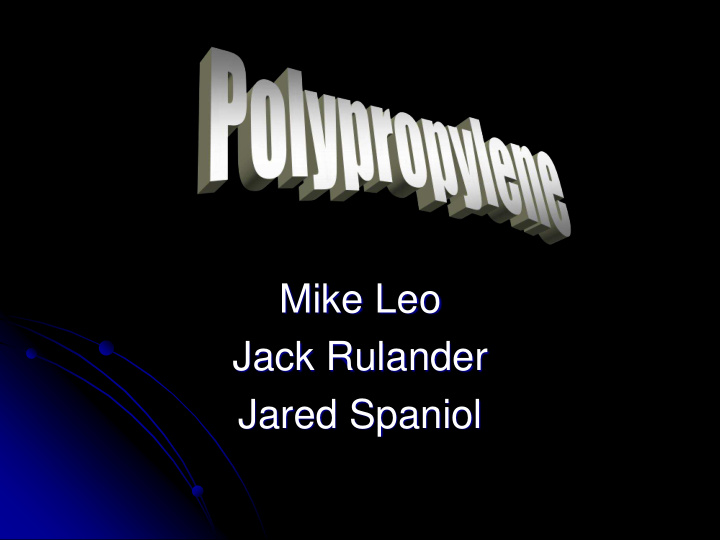



Mike Leo Jack Rulander Jared Spaniol
Introduction Spain, 1954 Professor Giulio Natta Poly(1-Methylethylene) Very Versatile Wide Range of Applications and Fabrication Methods
Production Naphtha Petrochemical Steam Crackers Olefins (including propylene) Ziegler-Natta Polymerization Polypropylene
Terribly Boring Facts Annual Production of PP is 8.4 Million Metric Tons Production Forms Fiber Pellet Tape Continuous Filament Sheets, Rods, and Flakes
Terribly Boring Facts Cont’d Available Grades Homopolymer Block Copolymer Random Copolymer Density .093 g/cc One of the few plastics less dense than water
Properties Flammability Classified as HB Classified as “Quite Flammable” Hot, Flaming Balls Semi-Crystalline Tm-350 °F Tg-15 °F
Process Settings Melt Temp 420-540 °F Injection Pressure 8260-12500 psi Fill Rate .5-2 in/sec Mold Temp 84.2-160 °F Max Regrind 15-30% Works Well With All Gates
Advantages Living Hinge Applications Excellent Chemical Resistance Low Density High Impact Strength Cheap Low Tg-Flexible Thermally Stable Easily Modified Not Hygroscopic
Disadvantages Highly Flammable Poor Weathering Resistance Low Notched Impact Strength Difficult to Decorate Poor Low Temp Resistance
Major Suppliers Exxon Mobile Honam Petrochemicals Hyundai Petrochemicals Shell Samsung Huntsman Polymers
Common Uses Medical Field Food Storage Automotive Parts Textiles Many Others
Questions
Recommend
More recommend